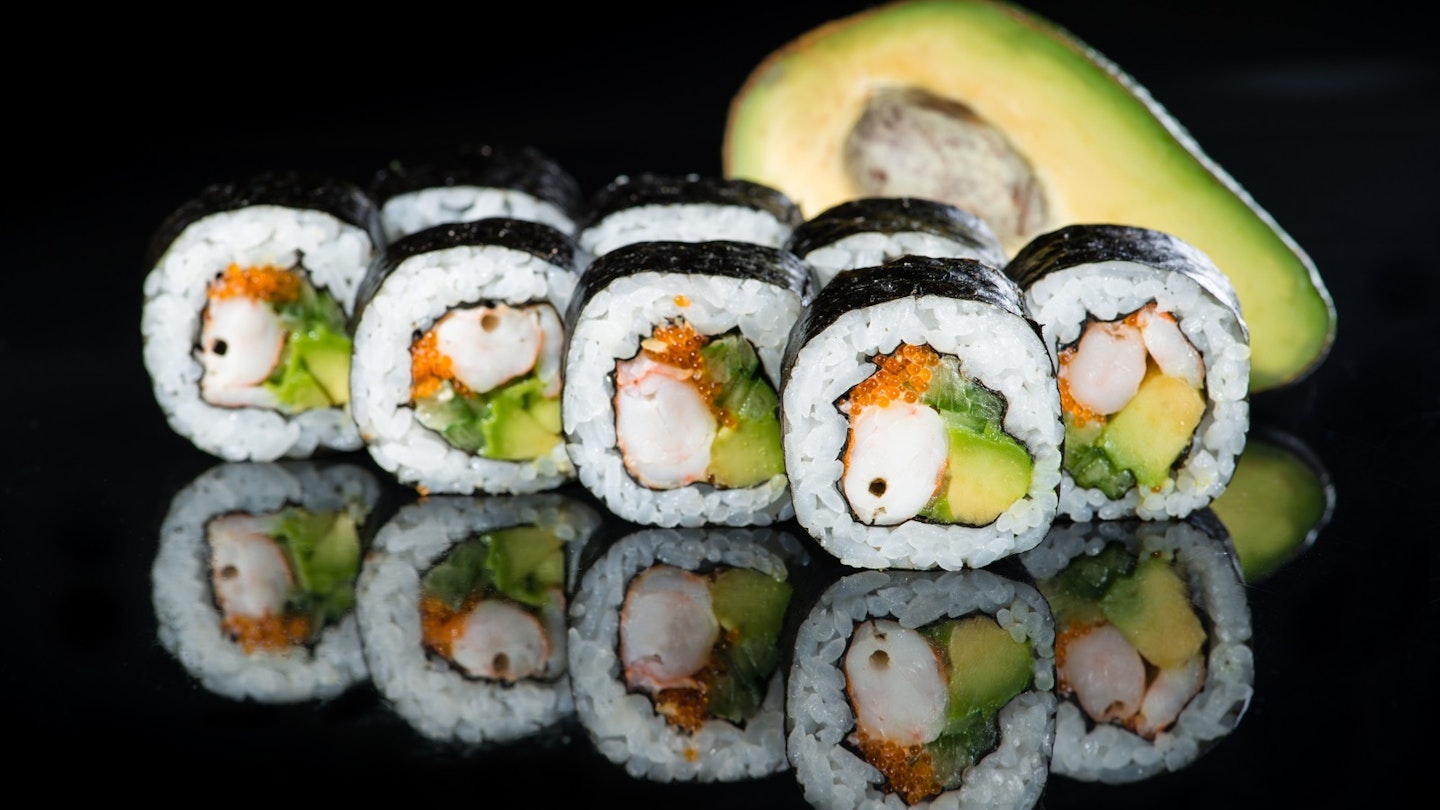
Despite its name, the California roll first gained popularity outside of the United States in Vancouver, British Columbia. Although often criticized as being ‘inauthentic,’ this roll was not only developed by a renowned sushi chef, but it also played a significant role in popularizing Japanese cuisine around the globe.
Catering to a New Set of Tastes
Chef Hidekazu Tojo, originally from Osaka, emigrated to Vancouver in 1971 with a wealth of culinary experience from traditional Japanese restaurants. He quickly noted the limited sushi preferences of Vancouverites, which prompted him to experiment with non-traditional ingredients and flavors. This resulted in the creation of the ‘inside out’ Tojo Roll, a delightful mix of sushi rice, seaweed, avocado, crab, and cucumber.

Tojo foresaw the potential success of the California roll, believing that concealing the seaweed and avoiding raw fish would make sushi more appealing to a wider audience. Although he is widely acknowledged as the creator of the roll, other sushi chefs in Los Angeles have also claimed its invention in recent years. Consequently, the availability of the California roll expanded into cities across North America and beyond.
Tojo’s creativity inspired additional sushi creations, including the BC Roll—a popular variant featuring barbecued salmon skin, replacing eel with salmon to highlight the region’s natural resources. Other rolls such as the Rainbow Roll, Spider Roll, and Golden Roll also find their origins linked to Tojo.

Tojo has received numerous accolades in recent years, being recognized by the Wall Street Journal, Vancouver Magazine, and television shows such as Anthony Bourdain: No Reservations. After 18 years of success with his Vancouver restaurant, Tojo was inducted into the British Columbia Restaurant Hall of Fame. In 2016, the Japanese government named him a Goodwill Ambassador of Japanese cuisine, one of only 13 ambassadors outside Japan to earn this honor.
A Trend Catches Fire
Initially met with skepticism, Tojo’s inventive rolls eventually gained recognition, significantly contributing to the popularity of Japanese cuisine in the Western world. The sushi scene in BC has since flourished, with Tojo’s restaurant remaining a highly regarded establishment. Following the introduction of the California roll, various notable sushi restaurants in Vancouver have crafted their own interpretations of this celebrated dish.

Among these establishments is Miku—a trendy waterfront restaurant that specializes in Aburi-style sushi, using a flame to lightly sear the raw fish. Miku’s innovative approach substitutes crab with prawn and wraps it in red tuna, garnished with a crunchy ginger and onion sauce. This roll is also available at Minami, Miku’s sister restaurant. Another casual option is Naruto Sushi, which serves a deep-fried version of Tojo’s renowned invention.
Other popular sushi spots in Vancouver, such as The Eatery and The General Public, take the innovative spirit of the California roll to new heights, utilizing unconventional ingredients like yam, coconut, artichoke hearts, and bananas. For sushi purists, Toshi, Tomokazu, and Samurai Sushi House offer traditional takes on this beloved roll.
The Beginning of ‘Hands-Off’ Dining
While the California roll may be Tojo’s trademark, his influence extends far beyond it. Initially, there was a scarcity of sushi restaurants in BC’s largest city during the 1970s, but many would argue that Vancouver is now the sushi capital of North America, boasting over 600 sushi dining establishments. Many of these have embraced omakase dining, where the chef thoughtfully curates each course of the meal.

The term omakase translates to ‘I’ll leave it up to you,’ emphasizing the experience of trusting the chef’s selections. One of the early omakase-style restaurants in the city, Sushi Bar Maumi, is highly regarded for its intimate atmosphere and unique daily creations, importing its fish from Japan multiple times weekly to ensure freshness and quality.
Newer venues like Sushi Bar Shu, located in Vancouver’s Marpole neighborhood, offer an omakase experience featuring items like creamy uni and black cod nigiri. Another elegant sushi establishment, Masayoshi, focuses solely on its omakase menu, while restaurants like Octopus’ Garden and Tetsu Sushi Bar provide omakase as an option.





